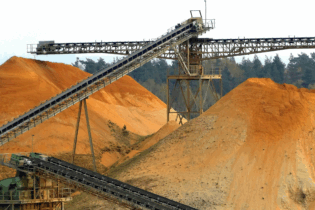As engineers, I believe we have two options. Continue as we are and be commoditised, or embrace a disrupted future and become better designers and innovators. We have the opportunity to create “custodians” of the quality of design and take the talent and experience embedded within our profession to advise and influence policy makers, clients, academia and communities.
We must question everything, and seek to understand change. Our industry-wide philosophy must be to embrace, not fear business and marketplace disruption. Our challenge is to focus on problem finding and problem solving for clients and explore the essence of great design, just as the best design engineers did in the past. We can steer thinking away from expedient, short term economic and political solutions. We can become creators of both elegant and functional solutions to address societies’ big challenges, if we imbed ourselves within the process and with a passion for design. Making it happen This means building strong, design-focused relationships with the marketplace that empower our best designers and allow them to imagine and connect deeply with projects. Our creative objective should be to better conceptualise, provoke, refine, plan and deliver excellence across the lifecycle of projects – for whomever they resonate or impact. The design heritage of engineers stretches back for millennia. We continue this passion and heritage today but to honour it truthfully, we must constantly strive to add greater design value to our projects and communities. We must be bold in the solutions we seek and ultimately deliver. The futures of unborn generations depend on it. * Dr Kourosh Kayvani, is the global director of excellence and expertise at international engineering form, Aurecon
By Dr Kourosh Kayvani
As the world becomes increasingly complex, ambiguous and volatile, creative and innovative design must underpin the way we frame and solve problems facing humanity and our environment.
Engineering design has obviously always had a vital role to play in delivering our built environment and infrastructure. However, engineering design should be more than having an understanding of technical specifications and applying these to deliver new infrastructure. It is true that as engineers we help deliver projects in technically sound, cost effective, fit-for-purpose way. But we can and should have a bigger imagination of our role.
Engineering-led design
I believe as consulting engineers, we are undervaluing the opportunities created by embracing “engineering-led” design where grand challenges and deep aspirations are solved in the macro scale through the system thinking engrained in engineering design. But for that to hold true our profession needs to embrace the view that delivering truly meaningful design solutions requires acknowledging the importance of human centric thinking to the same level as system thinking. Equally, we have fallen into a habit of not clearly and confidently communicating how engineers can play such a pivotal role in designing and delivering places and infrastructure for future generations. Remember we have done this before.
Think of engineering visionaries, such as C. Y. O’Connor who in 1896 devised a pipeline scheme in Western Australia larger than anything ever attempted in the world to that date, which still delivers potable water to Coolgardie and Kalgoorlie. Or J.J.C. Bradfield who, as engineer in charge of Sydney Harbour Bridge, had a vision to unite Sydney’s topography and in doing so, created a bridge design that had built-in capacity for growth. Or I. K. Brunel who, as an engineering giant, changed the face of the British landscape.
In the recent past, we have allowed our professionals to become less recognised, even undervalued. The power of engineered design has been subsumed across our profession by too much focus on delivering conventional systems and operating within narrowly-defined functional elements. We have become supporters of design, rather than incubators of innovation to create unique solutions.
Creating visionaries
Great engineering visionaries and designers must not remain discipline bound; they should become discipline integrators. Change is being forced upon every one of us. In the same way that computing and robotics have disrupted blue collar businesses, these advances are disrupting professional services like ours. In our profession, this disruption comes in many forms.








